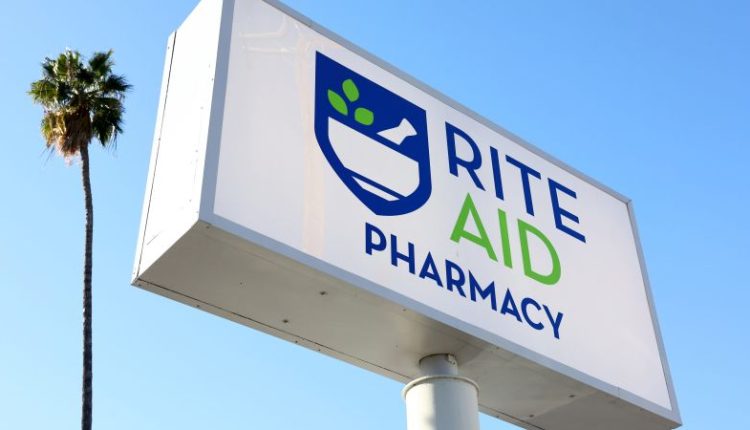Rite Aid filed for Chapter 11 bankruptcy protection Sunday, a casualty of a miserable environment for drug stores, exacerbated by its runner-up status to bigger chains and expensive legal battles for allegedly filling unlawful opioid prescriptions.
The bankruptcy was not a surprise. Its bigger rivals, CVS and Walgreens, are also facing many of the same problems. They, too, are closing stores as Amazon and big-box chains like Walmart, Target and Costco serve as more customer-friendly alternatives to nationwide pharmacy chains.
But Rite Aid is in much worse financial shape than its competitors and unable to weather the storm that has been beating down on the industry. On Thursday, it filed a notice to the US Securities and Exchange Commission saying it would be unable to file its latest quarterly financial report because it was looking at “strategic alternatives,” which is Wall Street speak for “considering bankruptcy.”
In that filing, the company said it expected its losses would increase significantly in the past quarter, which is saying something, considering it lost about three quarters of a billion dollars between March 2022 and March 2023 — and another $307 billion between March and May this year. Over the past six years, Rite Aid has tallied nearly $3 billion in losses.
At the beginning of June, the last time the company filed a financial report, Rite Aid had just $135.5 million of cash on hand -— and $3.3 billion in long-term debt, which exceeded the value of the company’s assets by nearly $1 billion. With rising interest rates, that debt wasn’t cheap to finance.
“It was always a matter of when, not if, Rite Aid would file for bankruptcy,” said Neil Saunders, managing director of GlobalData, in a note to investors. “The company has been deep in the red for the past six years.”
The company said in a statement it had secured $3.5 billion in financing and debt reduction agreements from lenders to keep the company afloat through its bankruptcy.
It said it would accelerate its pace of store closures and sell off some of its businesses, including prescription benefit provider Elixir Solutions. Bankruptcy could also help resolve the company’s legal disputes at a vastly reduced cost.
As part of the bankruptcy plan, Rite Aid appointed a new CEO, Jeff Stein, who will also serve as the head of restructuring and a board member. Stein, in the statement, said the company plans to remain in business.
“With the support of our lenders, we look forward to strengthening our financial foundation, advancing our transformation initiatives and accelerating the execution of our turnaround strategy,” he said. “In doing so, we will be even better able to deliver the healthcare products and services our customers and their families rely on -— now and into the future.”
Rite Aid has had an interim CEO since January 2023.
Rite Aid’s losing battle against mounting debt was exacerbated by its legal troubles stemming from accusations of filing unlawful opioid prescriptions for customers.
The Department of Justice filed suit against the company in March, claiming that it knowingly processed “unlawful prescriptions for controlled substances.” That stands in violation of the False Claims Act and Controlled Substances Act. The government accused Rite Aid of missing “obvious red flags” when it filled the prescriptions for addictive pain killers.
When the US Justice Department filed its lawsuit, Attorney General Merrick Garland said the department would use “every tool at our disposal” to hold Rite Aid accountable for contributing to the opioid epidemic.”
Walgreens, CVS and others settled similar lawsuits over the past few years, but they remain in better financial shape and were largely able to weather the tens of billions of dollars owed to various government agencies in settlements.
More than half a million people have died from drug overdoses in the United States between 1999 and 2020, according to the US Centers for Disease Control and Prevention.
Rite Aid is a distant third-largest nationwide standalone pharmacy chain in the United States — and the seventh largest pharmacy overall, when taking into account big box chains. It has more than 2,200 stores in 17 states.
It was offered a $17 billion lifeline in 2015 when Walgreens offered to buy the chain. But the deal was met with stiff scrutiny from US regulators who feared the combination would violate federal antitrust laws and reduce competition in the drug store market.
Ultimately, in 2017, the companies agreed to a smaller, $4.4 billion deal, in which Walgreens bought just under 2,000 Rite Aid locations, leaving Rite Aid diminished in stature and unable to compete at the scale of its bigger rivals.
— CNN’s Nathaniel Meyersohn and Juliana Liu contributed to this report
Read the full article here

